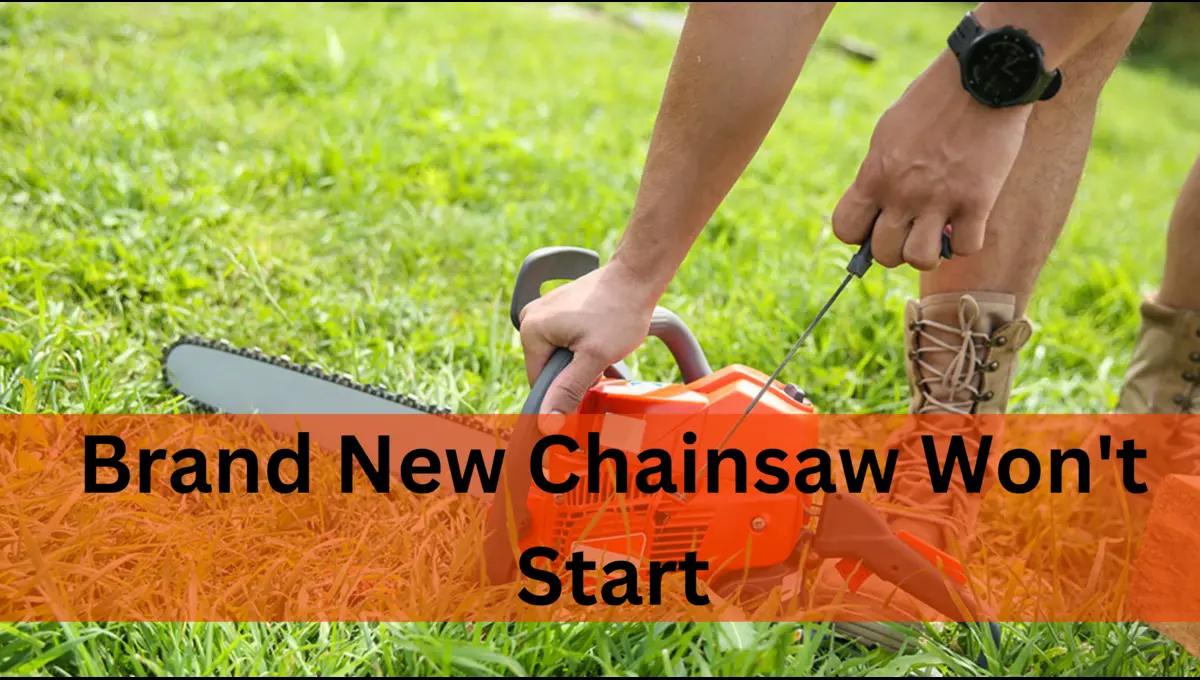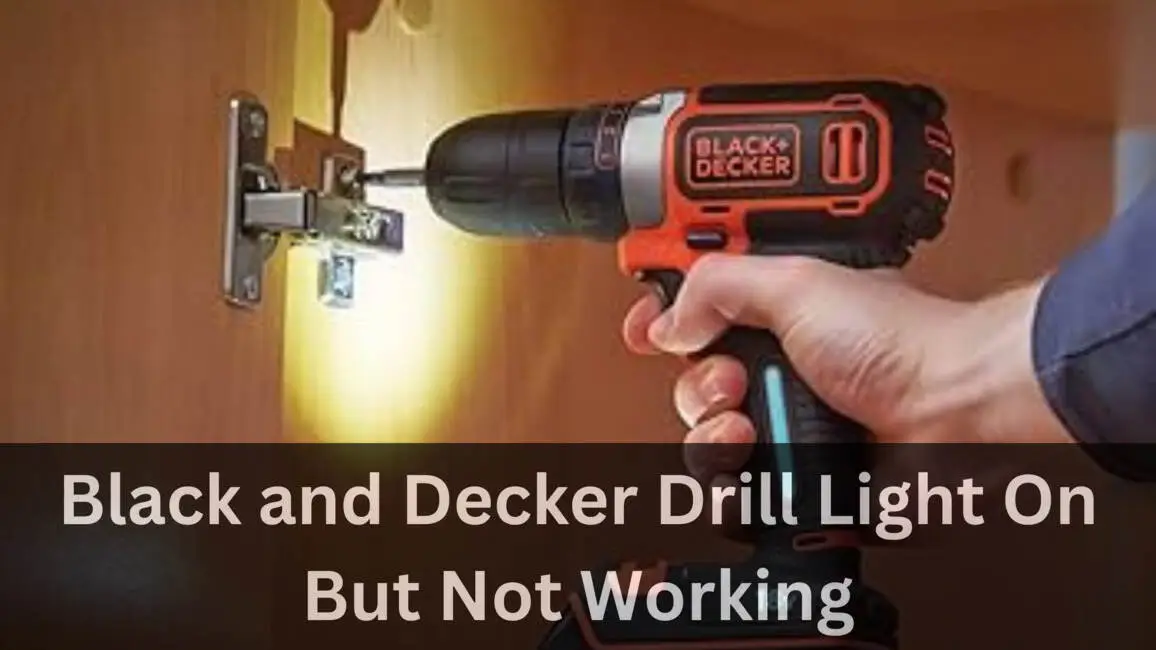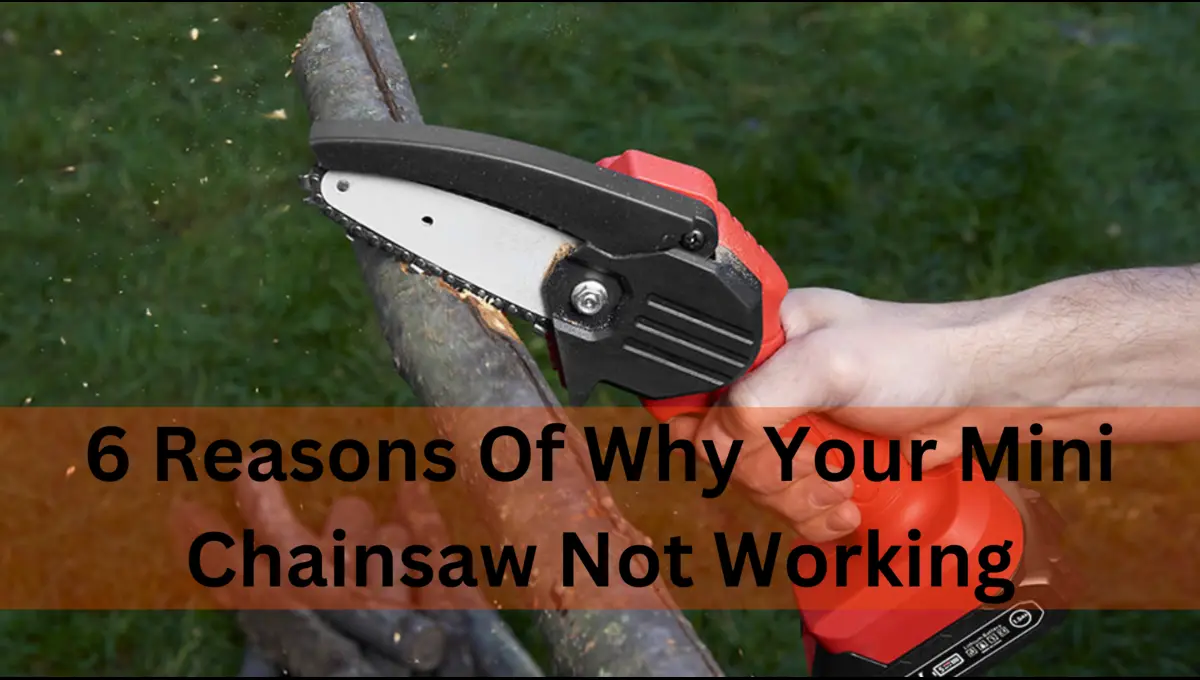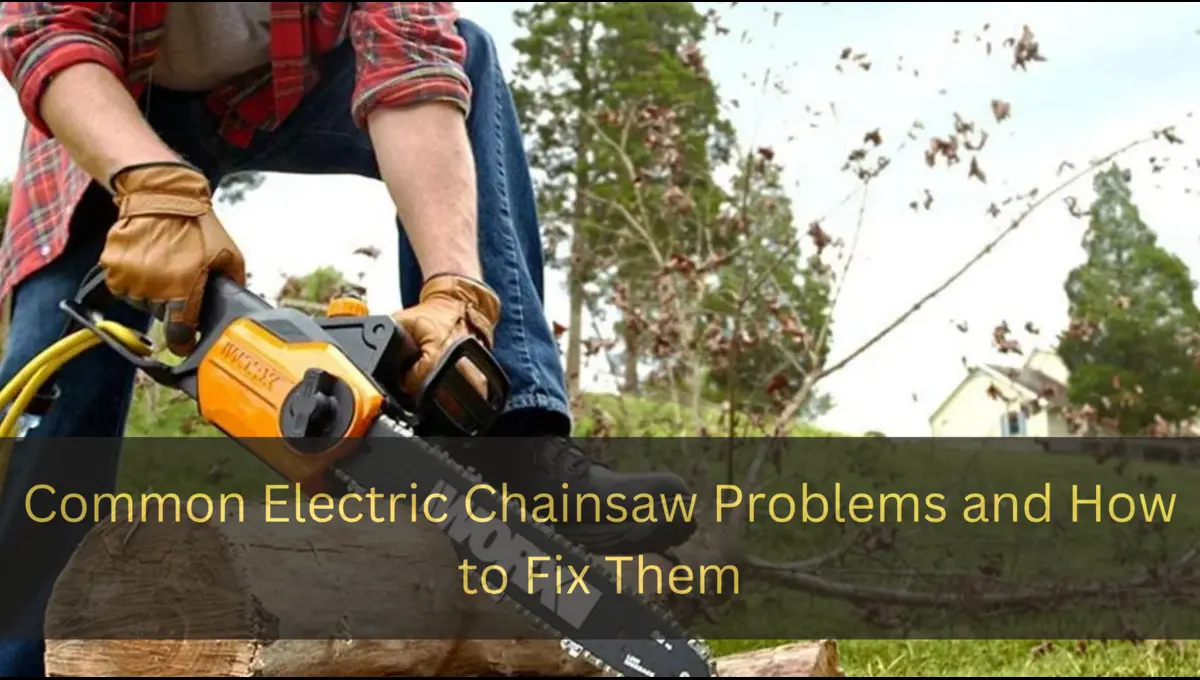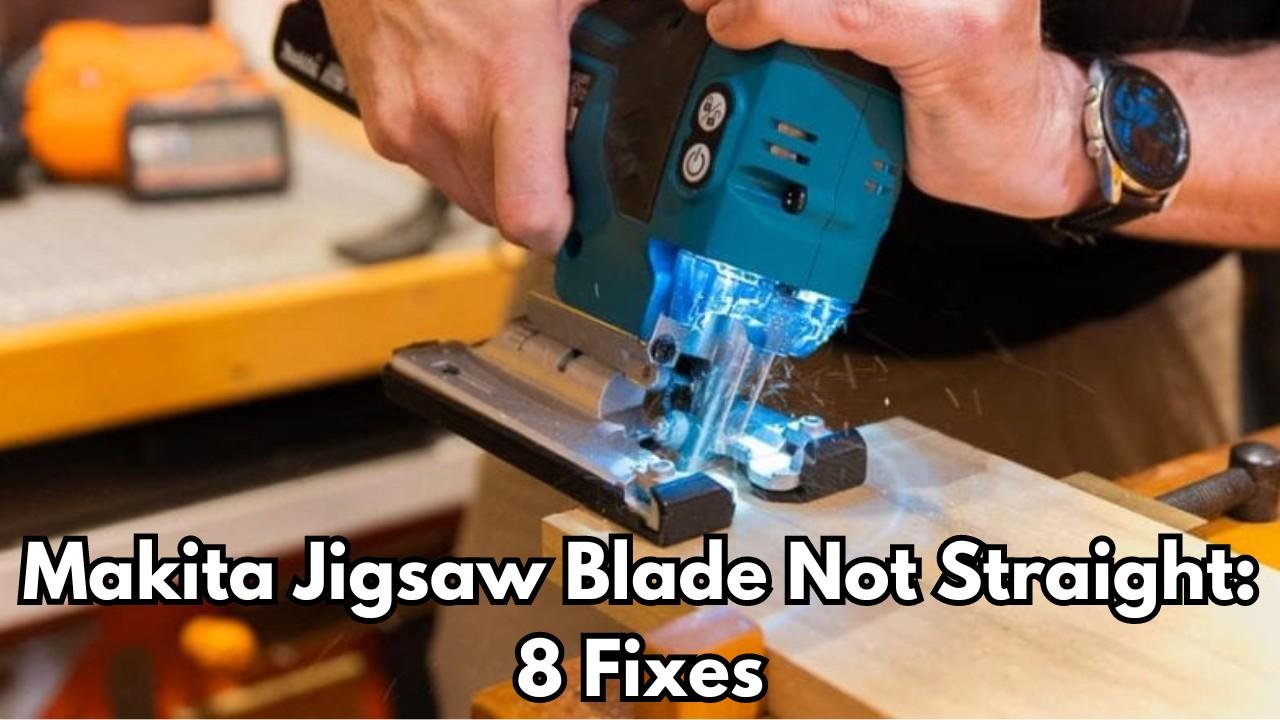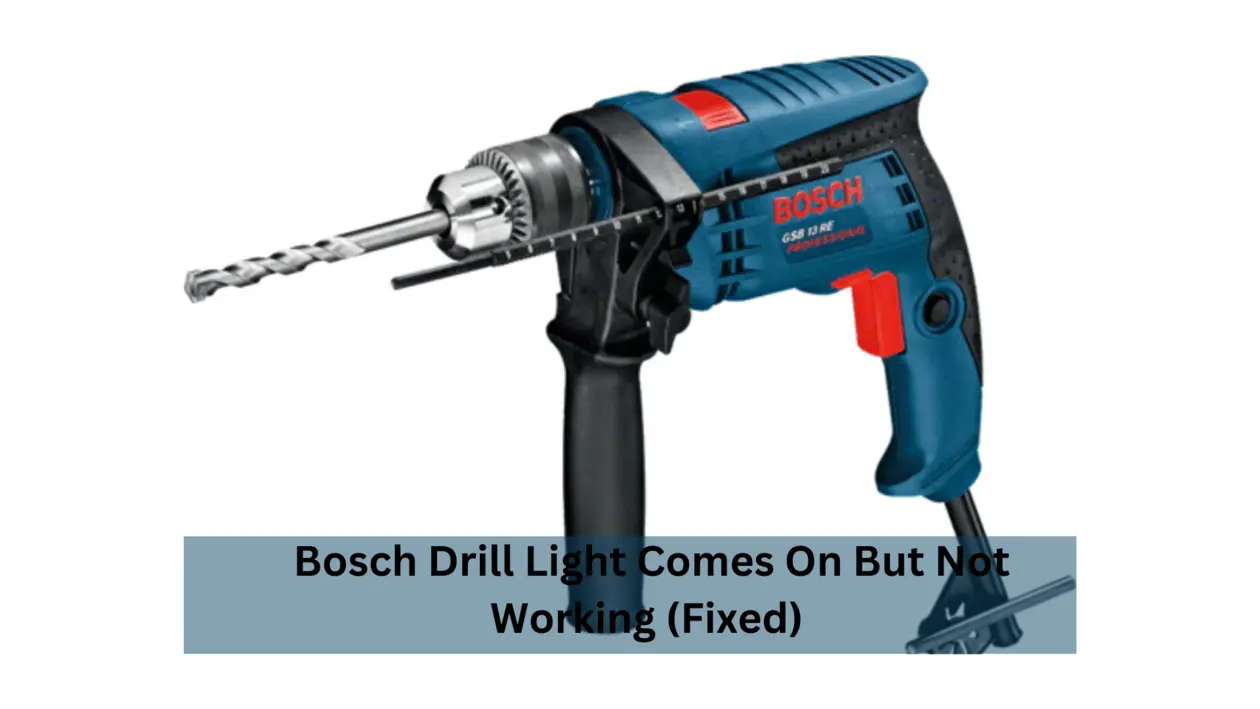So, your new chainsaw is giving you a hard time starting, and it’s annoying, right? Well, don’t worry. We will figure out why it’s not starting and fix it together. Whether you’re a pro or like using a chainsaw for outdoor projects. We’ll explore the common problems when your brand new chainsaw won’t start. Let’s dive into this and transform your new tool from silent to strong.
First things first, don’t take a mess on your hands. Firstly, check if there’s a warranty. If so, go for a replacement from the store where you bought it. If your chainsaw is old, opt for repair. Remember to record a video while opening your saw so you remember how to put it back together.
Brand New Chainsaw Won’t Start (Causes and Fixes)
Air Filters Problems
Air filters in chainsaws are super important. They work like a protective shield, preventing dirt and debris from entering the engine. This helps the engine work its best and last a long time.
The main job of air filters is to keep out things that don’t belong there and ensure the air flows properly for burning fuel.
If the air filters work well, the engine might stay hot and work better overall. So, good air filters are essential for a chainsaw to run smoothly and last long.
- Cleaning and Replacement Procedures:
- Maintenance of air filters is vital for preventing performance issues. Regular cleaning or replacement is recommended, with signs indicating the need for attention, including increased fuel consumption, overheating, and decreased performance.
- The cleaning process involves removing the cylinder cover and air filter, inspecting for dirt or damage, and washing the filter with warm, soapy water if dirty.
- The frequency of cleaning is suggested to be after every 10 hours of use, with different types of air filters available for various conditions.
- Maintenance Tips and Conclusion:
- Taking good care of your air filters is essential to stop the engine from getting hurt and make your chainsaw last a long time. Different air filters exist for different situations, like standard ones, winter ones, and felt filters for places with lots of dust.
- Using a sharp chain is also a good idea because it lowers the amount of wood dust, so your filter stays cleaner. If you need help cleaning the filter, it’s okay to ask someone who knows, like a local dealer or someone experienced.
- Looking after your air filters helps your chainsaw work well and stay strong. Remember to clean or change them regularly based on how much you use your chainsaw and where you use it.
Spark Plug Problems
Spark plugs are essential for chainsaws. They act as tiny engine helpers to ensure a smooth mix of fuel and air, keeping everything running well. A bad spark plug could be the culprit when you face difficulties starting your chainsaw or notice a rough engine.
Examining the spark plug for dirt, oily residue, or damage provides crucial clues. Unusual sounds, like a rough engine or difficulty starting, may indicate spark plug issues.
Several factors contribute to spark plug problems. Excessive oil in the fuel mix can lead to carbon buildup on the spark plug, affecting its performance. A clogged air filter or prolonged idling can also disrupt the spark plug’s functionality.
Use a spark plug checker to assess and maintain your spark plug. If it’s dirty, a wire brush can be used to clean it or washed with warm water and soap for oily residue. If the spark plug is damaged or not sparking, replacing it with a suitable match is necessary.
Ensuring the longevity of your spark plugs involves regular cleaning or replacement. The correct fuel and oil mix is crucial to prevent buildup on the spark plug. Limiting idle time on your chainsaw can also prevent problems with the spark plug.
Fuel Inspection
When you have the chainsaw, listen for a sloshing sound in the fuel tank. If you hear it, be curious about the fuel’s condition. Stale or messed-up fuel could be the reason the chainsaw won’t start.
Take a closer look, and you might find a surprise – the fuel in the tank isn’t the right mix; it’s just straight gas. That’s a problem because chainsaws need a specific fuel mix.
Fuel Line and Filter Replacement
Before putting the carburetor back together, it’s a good idea to tackle the fuel situation. Consider pouring out the old fuel from the tank; it’s a preventive measure to avoid lingering issues.
To step it up, you should replace the fuel line. Opt for a more ethanol-resistant fuel line; use 100% gas for better results if you can.
Ensure the size of the new fuel line matches the original, making the installation process a breeze. This approach ensures that the fuel reaching the engine is clean and suitable, promoting optimal chainsaw performance.
Compression Check
Do a compression check if you are worried about damage from using the wrong fuel. It helps you see if the engine is okay. When you pull the rope slowly, the engine should resist a bit—that’s good. To be sure, remove the spark plug and use a compression tester.
The number might be flawed, but your engine is in good shape if it’s around 80 psi. The number would be much lower if the engine didn’t like the straight gas. This check tells you essential stuff so you can figure out what to do next.
Carburetor Inspection and Diaphragm Evaluation
When your chainsaw doesn’t start, you look into the carburetor. Remove the top part to check the pumping diaphragm and ensure the valve flaps are flat. If there’s any film, clean the round screen with carb cleaner.
Then, inspect the metering diaphragm; if it has wrinkles, it’s time for a change. Test if the fuel flows correctly by pouring some in and pressing the rocker’s arm. If the fuel disappears, you’re good; if not, a bit more cleaner on the screen might help.
Since the diaphragm needs changing, order a new one online, ensuring it matches the old one. Replace the old diaphragm and put the carburetor back together when it arrives. Then, check, clean, and change a part of the carburetor to get your chainsaw running smoothly again.
Carburetor Adjustment for Chainsaw Performance
If persistent starting issues plague your chainsaw, it’s time to inspect the carburetor. Place the chainsaw on a steady surface and let it warm for about five minutes after starting. Look for three adjustment screws labelled H (High), L (Low), and T (Idle) near the pull rope.
These screws act like tuning guitar strings, fine-tuning the carburetor for optimal performance. The H screw manages the Air/Fuel mix during high RPMs, the L screw does the same at low RPMs, and the T screw regulates fuel during idling.
Begin with the L screw; while the chainsaw is running, turn it clockwise until the engine nearly stops, then slowly turn it counterclockwise until the engine idles smoothly.
Adjust until the engine accelerates seamlessly. Moving on to the T screw, turn it clockwise until the chainsaw chain starts moving, then slowly turn it counterclockwise until the chain stops, ensuring a smooth idle without chain movement.
Lastly, adjust the H screw by turning it counterclockwise until it naturally stops, avoiding force. The engine may sound rough; turn the H screw clockwise until the engine runs smoothly. Squeeze the throttle trigger; there should be no smoke from the exhaust, and the engine should accelerate effortlessly. These adjustments optimize the carburetor, ensuring smooth chainsaw operation across various RPMs.
Conclusion
So, here’s the bottom line: fixing a chainsaw that won’t start can be tricky, but with a little knowledge, you can do it. Whether you’re using it for serious work or just weekend projects, it’s important to figure out and fix the problems.
You can turn your quiet chainsaw into a strong and dependable tool using the solutions we discussed. Now that you know how to find and solve the issue, you can feel confident about working your chainsaw again and returning to your outdoor tasks without a hitch.
